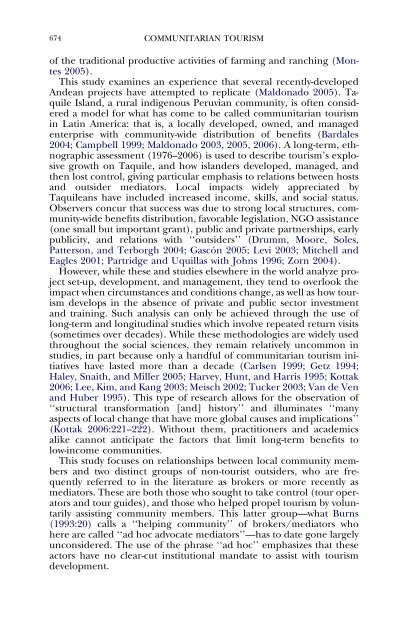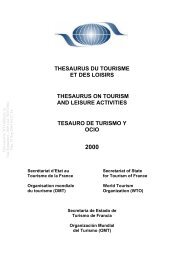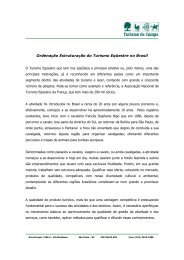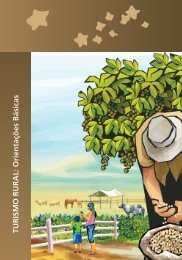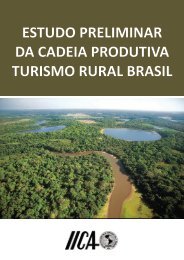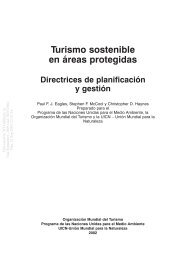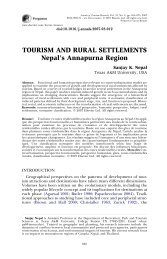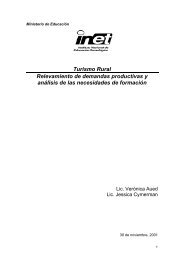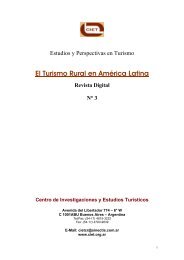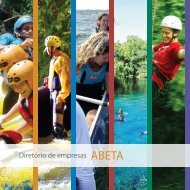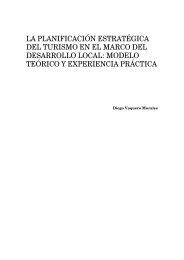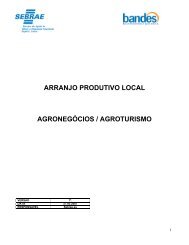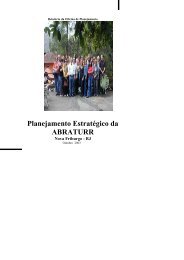COMMUNITARIAN TOURISM Hosts and Mediators in Peru
COMMUNITARIAN TOURISM Hosts and Mediators in Peru
COMMUNITARIAN TOURISM Hosts and Mediators in Peru
You also want an ePaper? Increase the reach of your titles
YUMPU automatically turns print PDFs into web optimized ePapers that Google loves.
674 <strong>COMMUNITARIAN</strong> <strong>TOURISM</strong><br />
of the traditional productive activities of farm<strong>in</strong>g <strong>and</strong> ranch<strong>in</strong>g (Montes<br />
2005).<br />
This study exam<strong>in</strong>es an experience that several recently-developed<br />
Andean projects have attempted to replicate (Maldonado 2005). Taquile<br />
Isl<strong>and</strong>, a rural <strong>in</strong>digenous <strong>Peru</strong>vian community, is often considered<br />
a model for what has come to be called communitarian tourism<br />
<strong>in</strong> Lat<strong>in</strong> America: that is, a locally developed, owned, <strong>and</strong> managed<br />
enterprise with community-wide distribution of benefits (Bardales<br />
2004; Campbell 1999; Maldonado 2003, 2005, 2006). A long-term, ethnographic<br />
assessment (1976–2006) is used to describe tourism’s explosive<br />
growth on Taquile, <strong>and</strong> how isl<strong>and</strong>ers developed, managed, <strong>and</strong><br />
then lost control, giv<strong>in</strong>g particular emphasis to relations between hosts<br />
<strong>and</strong> outsider mediators. Local impacts widely appreciated by<br />
Taquileans have <strong>in</strong>cluded <strong>in</strong>creased <strong>in</strong>come, skills, <strong>and</strong> social status.<br />
Observers concur that success was due to strong local structures, community-wide<br />
benefits distribution, favorable legislation, NGO assistance<br />
(one small but important grant), public <strong>and</strong> private partnerships, early<br />
publicity, <strong>and</strong> relations with ‘‘outsiders’’ (Drumm, Moore, Soles,<br />
Patterson, <strong>and</strong> Terborgh 2004; Gascón 2005; Levi 2003; Mitchell <strong>and</strong><br />
Eagles 2001; Partridge <strong>and</strong> Uquillas with Johns 1996; Zorn 2004).<br />
However, while these <strong>and</strong> studies elsewhere <strong>in</strong> the world analyze project<br />
set-up, development, <strong>and</strong> management, they tend to overlook the<br />
impact when circumstances <strong>and</strong> conditions change, as well as how tourism<br />
develops <strong>in</strong> the absence of private <strong>and</strong> public sector <strong>in</strong>vestment<br />
<strong>and</strong> tra<strong>in</strong><strong>in</strong>g. Such analysis can only be achieved through the use of<br />
long-term <strong>and</strong> longitud<strong>in</strong>al studies which <strong>in</strong>volve repeated return visits<br />
(sometimes over decades). While these methodologies are widely used<br />
throughout the social sciences, they rema<strong>in</strong> relatively uncommon <strong>in</strong><br />
studies, <strong>in</strong> part because only a h<strong>and</strong>ful of communitarian tourism <strong>in</strong>itiatives<br />
have lasted more than a decade (Carlsen 1999; Getz 1994;<br />
Haley, Snaith, <strong>and</strong> Miller 2005; Harvey, Hunt, <strong>and</strong> Harris 1995; Kottak<br />
2006; Lee, Kim, <strong>and</strong> Kang 2003; Meisch 2002; Tucker 2003; Van de Ven<br />
<strong>and</strong> Huber 1995). This type of research allows for the observation of<br />
‘‘structural transformation [<strong>and</strong>] history’’ <strong>and</strong> illum<strong>in</strong>ates ‘‘many<br />
aspects of local change that have more global causes <strong>and</strong> implications’’<br />
(Kottak 2006:221–222). Without them, practitioners <strong>and</strong> academics<br />
alike cannot anticipate the factors that limit long-term benefits to<br />
low-<strong>in</strong>come communities.<br />
This study focuses on relationships between local community members<br />
<strong>and</strong> two dist<strong>in</strong>ct groups of non-tourist outsiders, who are frequently<br />
referred to <strong>in</strong> the literature as brokers or more recently as<br />
mediators. These are both those who sought to take control (tour operators<br />
<strong>and</strong> tour guides), <strong>and</strong> those who helped propel tourism by voluntarily<br />
assist<strong>in</strong>g community members. This latter group—what Burns<br />
(1993:20) calls a ‘‘help<strong>in</strong>g community’’ of brokers/mediators who<br />
here are called ‘‘ad hoc advocate mediators’’—has to date gone largely<br />
unconsidered. The use of the phrase ‘‘ad hoc’’ emphasizes that these<br />
actors have no clear-cut <strong>in</strong>stitutional m<strong>and</strong>ate to assist with tourism<br />
development.


